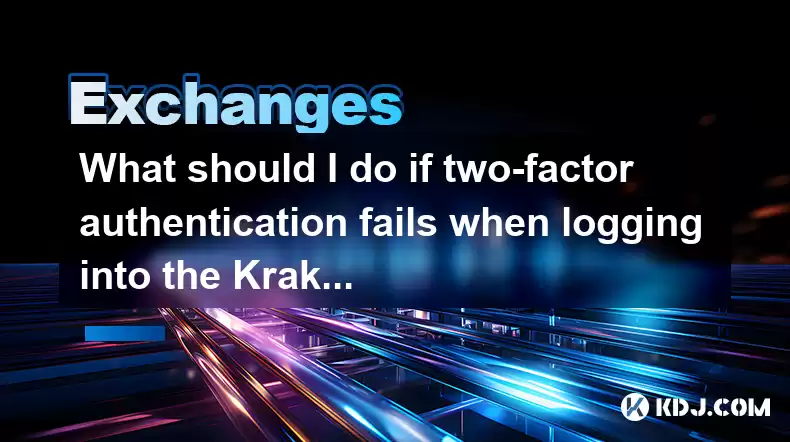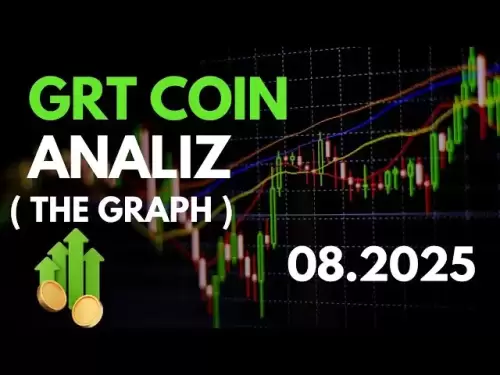-
 Bitcoin
Bitcoin $119300
2.40% -
 Ethereum
Ethereum $4254
-0.20% -
 XRP
XRP $3.184
-1.38% -
 Tether USDt
Tether USDt $1.000
0.00% -
 BNB
BNB $803.9
0.58% -
 Solana
Solana $183.1
1.50% -
 USDC
USDC $0.0000
0.01% -
 Dogecoin
Dogecoin $0.2339
-2.87% -
 TRON
TRON $0.3384
0.88% -
 Cardano
Cardano $0.8018
-0.29% -
 Hyperliquid
Hyperliquid $45.13
3.14% -
 Chainlink
Chainlink $22.10
0.96% -
 Stellar
Stellar $0.4439
-0.94% -
 Sui
Sui $3.875
-0.73% -
 Bitcoin Cash
Bitcoin Cash $570.7
0.24% -
 Hedera
Hedera $0.2589
-2.90% -
 Ethena USDe
Ethena USDe $1.001
-0.01% -
 Avalanche
Avalanche $23.83
-1.73% -
 Litecoin
Litecoin $123.8
2.61% -
 Toncoin
Toncoin $3.351
-1.13% -
 UNUS SED LEO
UNUS SED LEO $9.103
1.13% -
 Shiba Inu
Shiba Inu $0.00001356
-1.40% -
 Uniswap
Uniswap $10.93
-0.19% -
 Polkadot
Polkadot $4.057
-1.97% -
 Dai
Dai $1.000
0.01% -
 Cronos
Cronos $0.1646
4.66% -
 Ethena
Ethena $0.7974
8.11% -
 Pepe
Pepe $0.00001208
-2.89% -
 Bitget Token
Bitget Token $4.445
-1.70% -
 Monero
Monero $268.8
-2.00%
What should I do if two-factor authentication fails when logging into the Kraken exchange?
Kraken 2FA failure? Check your code, authenticator app, and network. If issues persist after reviewing recent logins, contact Kraken support for account recovery assistance.
Mar 19, 2025 at 01:14 pm

Key Points:
- Two-factor authentication (2FA) failures on Kraken can stem from several sources: incorrect codes, app issues, network problems, or account compromise attempts.
- Troubleshooting involves verifying your 2FA method, checking for app malfunctions, ensuring network connectivity, and reviewing recent login attempts.
- If problems persist after troubleshooting, contacting Kraken support is crucial. They can help diagnose deeper issues and potentially reset your 2FA.
- Preventing future failures involves choosing a reliable 2FA method, securing your authenticator app, and regularly reviewing your account security settings.
What should I do if two-factor authentication fails when logging into the Kraken exchange?
Two-factor authentication (2FA) is a crucial security measure for any cryptocurrency exchange, including Kraken. When 2FA fails, it can be frustrating and concerning. Let's explore the potential causes and troubleshooting steps.
The most common reason for 2FA failure is simply entering an incorrect code. Double-check the code displayed on your authenticator app (like Google Authenticator or Authy) and ensure you're entering it precisely, paying attention to capitalization and any special characters. Even a single wrong digit can invalidate the code.
Another frequent issue is a problem with your authenticator app itself. Ensure the app is correctly synced with the server, has a stable internet connection, and is the latest version. Try restarting the app or even your phone. If you're using multiple devices with the same authenticator app, verify the code is the same across all instances.
Network connectivity problems can also interfere with 2FA. A weak or unstable internet connection can prevent your authenticator app from generating or transmitting the correct code. Try connecting to a different network or ensuring your connection is strong and stable. Check your phone's connection settings, and if you're using a VPN, temporarily disable it to see if that resolves the issue.
While less common, the possibility of a compromised account should always be considered. If you suspect unauthorized access, immediately change your Kraken password and revoke access to any linked devices or applications. Contact Kraken support immediately to report a potential security breach. They will guide you through securing your account.
If you've carefully checked the code, your authenticator app, and your network connection, and 2FA still fails, it's time to investigate further. Begin by carefully reviewing your recent login attempts within your Kraken account. Look for any unfamiliar IP addresses or login locations. This could indicate suspicious activity.
Troubleshooting Steps:
- Verify the 2FA Code: Carefully check the code displayed on your authenticator app for any typos. Re-enter it slowly and accurately.
- Check Authenticator App: Ensure the app is updated, synchronized, and has a stable internet connection. Restart the app and your device.
- Examine Network Connectivity: Test your internet connection. Try connecting to a different network or disabling VPNs temporarily.
- Review Recent Login Attempts: Check your Kraken account activity for any suspicious logins from unfamiliar locations or IP addresses.
- Contact Kraken Support: If the problem persists after attempting the above steps, reach out to Kraken's customer support for assistance.
Recovering from a 2FA Failure:
If you're completely locked out due to repeated 2FA failures, Kraken's support team will be your best resource. They can guide you through the process of recovering access to your account, which may involve verifying your identity through various security questions and potentially resetting your 2FA. Be prepared to provide them with all relevant information they request to ensure a smooth and secure recovery process.
Preventing Future 2FA Failures:
- Choose a Reliable 2FA Method: Opt for a reputable authenticator app like Google Authenticator or Authy. Avoid less-secure methods if possible.
- Secure Your Authenticator App: Protect your authenticator app with a strong password or biometric authentication, and avoid jailbreaking or rooting your device.
- Regular Security Reviews: Regularly review your Kraken account security settings, ensuring your 2FA is active and functioning correctly. Check for any unusual activity.
- Strong Password Practices: Use a unique and strong password for your Kraken account and enable two-factor authentication on all your crucial accounts.
Frequently Asked Questions:
Q: What if I lost my authenticator app or phone?
A: Contact Kraken support immediately. They have procedures to help you regain access and potentially reset your 2FA. You'll likely need to verify your identity through various security checks.
Q: Can I disable 2FA on my Kraken account?
A: While you can typically disable 2FA, it's strongly discouraged for security reasons. Disabling it significantly increases the risk of unauthorized access to your funds.
Q: My 2FA code is constantly changing. Is that normal?
A: Yes, this is normal behavior for time-based one-time passwords (TOTP) used in most 2FA authenticator apps. The code changes periodically to enhance security.
Q: What if I suspect my Kraken account has been compromised?
A: Immediately contact Kraken support and change your password. They can assist in investigating any suspicious activity and securing your account. Review your recent transactions and report any unauthorized withdrawals immediately.
Q: How long does it take for Kraken support to respond?
A: Response times can vary depending on the volume of support requests. It's best to be patient and follow up if you haven't received a response within a reasonable timeframe. Check their support channels for estimated wait times.
Disclaimer:info@kdj.com
The information provided is not trading advice. kdj.com does not assume any responsibility for any investments made based on the information provided in this article. Cryptocurrencies are highly volatile and it is highly recommended that you invest with caution after thorough research!
If you believe that the content used on this website infringes your copyright, please contact us immediately (info@kdj.com) and we will delete it promptly.
- Bitcoin FilmFest 2026: Warsaw's Unexpected Crypto-Cinema Blockbuster
- 2025-08-11 14:30:12
- MultiBank Group's Record Results and the Rise of the MBG Token: A New Era in Finance?
- 2025-08-11 14:30:12
- Dogecoin, Toncoin, and Cold Wallet: Navigating Crypto's Latest Waves
- 2025-08-11 12:30:11
- Ethereum's Resilience: Short Liquidations and Key Support Levels
- 2025-08-11 12:50:12
- Bitcoin Price Rockets Towards $121,000: What's Fueling the BTC Surge?
- 2025-08-11 13:10:12
- Bitcoin's Open Interest Surges 45%: Is $150K Next?
- 2025-08-11 13:30:12
Related knowledge

How to use margin trading on Poloniex
Aug 08,2025 at 09:50am
Understanding Margin Trading on Poloniex

How to read the order book on KuCoin
Aug 10,2025 at 03:21pm
Understanding the Order Book Interface on KuCoinWhen accessing the order book on KuCoin, users are presented with a real-time display of buy and sell ...

How to use advanced trading on Gemini
Aug 08,2025 at 04:07am
Understanding Advanced Trading on GeminiAdvanced trading on Gemini refers to a suite of tools and order types designed for experienced traders who wan...

How to use advanced trading on Gemini
Aug 08,2025 at 10:56pm
Understanding Advanced Trading on GeminiAdvanced trading on Gemini refers to the suite of tools and order types available on the Gemini ActiveTrader p...

How to get my API keys from KuCoin
Aug 08,2025 at 06:50pm
Understanding API Keys on KuCoinAPI keys are essential tools for users who want to interact with KuCoin's trading platform programmatically. These key...

How to trade options on Deribit
Aug 09,2025 at 01:42am
Understanding Deribit and Its Options MarketDeribit is a leading cryptocurrency derivatives exchange that specializes in Bitcoin (BTC) and Ethereum (E...

How to use margin trading on Poloniex
Aug 08,2025 at 09:50am
Understanding Margin Trading on Poloniex

How to read the order book on KuCoin
Aug 10,2025 at 03:21pm
Understanding the Order Book Interface on KuCoinWhen accessing the order book on KuCoin, users are presented with a real-time display of buy and sell ...

How to use advanced trading on Gemini
Aug 08,2025 at 04:07am
Understanding Advanced Trading on GeminiAdvanced trading on Gemini refers to a suite of tools and order types designed for experienced traders who wan...

How to use advanced trading on Gemini
Aug 08,2025 at 10:56pm
Understanding Advanced Trading on GeminiAdvanced trading on Gemini refers to the suite of tools and order types available on the Gemini ActiveTrader p...

How to get my API keys from KuCoin
Aug 08,2025 at 06:50pm
Understanding API Keys on KuCoinAPI keys are essential tools for users who want to interact with KuCoin's trading platform programmatically. These key...

How to trade options on Deribit
Aug 09,2025 at 01:42am
Understanding Deribit and Its Options MarketDeribit is a leading cryptocurrency derivatives exchange that specializes in Bitcoin (BTC) and Ethereum (E...
See all articles

























































































